Understanding Mountaineering in Pakistan
Let me take you on a journey into the world of Mountaineering in Pakistan, a realm where nature doesn’t just beckon it challenges. If you’ve ever wondered what it’s like to stare up at the towering giants of the Karakoram, the Hindu Kush, or the Himalayas, let me tell you, it’s nothing short of breathtaking. But beyond the views, it’s the sheer magnitude of these mountains that leaves you humbled.
Alpine climbing in pakistan isn’t just about setting foot on glaciers or navigating steep ridges. It’s about embracing a landscape that feels untouched by time. You’ll be testing your mental and physical endurance, yes, but you’re also stepping into a world where every ascent carries a story. Whether you’re scaling K2, the second-highest peak in the world, or taking on the challenges of lesser-known climbs, the experience is raw and real.
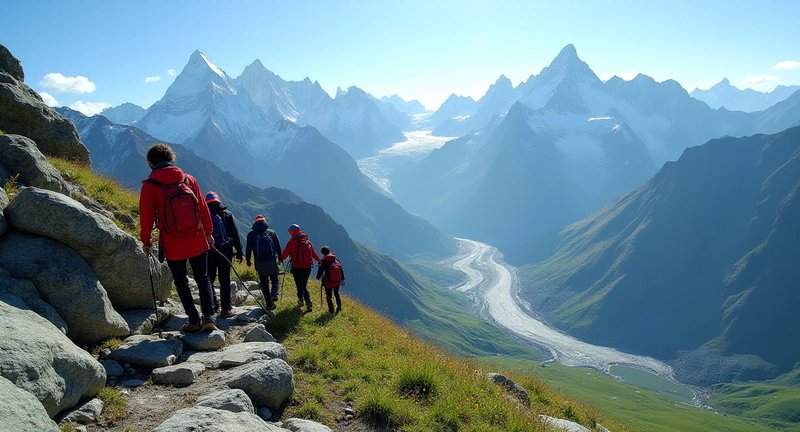
Here’s what makes this adventure unique:
-
Majestic Peaks: Pakistan is home to five of the world’s 14 tallest peaks above 8,000 meters. Names like K2, Nanga Parbat, and Gasherbrum will be etched into your memory.
-
Diverse Terrain: From glaciers to rock faces, the variety of terrain will keep you on your toes literally.
-
Local Expertise: The mountain guides here, often descendants of climbers, have knowledge passed down through generations. Trust me, when you’re navigating icy cliffs, their insight is priceless.
-
Cultural Immersion: It’s not just about the climb. The people of northern Pakistan are warm and welcoming, and the region’s rich culture adds layers to your adventure.
So, if you’re ready to experience the essence of Pakistan’s high-altitude expeditions, don’t just pack your gear bring an open mind. Every summit has a lesson, and every step is a story waiting to be told.
The Challenge of Mountaineering in Pakistan
Climbing in Pakistan is a whole new level of adventure. When you’re out there, it feels like the mountains are testing your patience, your endurance, even your sense of time. The landscape here doesn’t just intimidate; it commands respect.
I’ve had moments where the path seemed to vanish into thin air. You stand there, staring at the endless horizon, wondering if you’ve lost the trail or if the trail ever existed. It’s that feeling of uncertainty that keeps you grounded – literally and figuratively.
And then there’s the weather. One minute, you’re basking in sunlit glory, and the next, you’re battling icy winds that cut through every layer. The unpredictability is part of the thrill, though. You learn to move with the rhythm of nature, not against it.
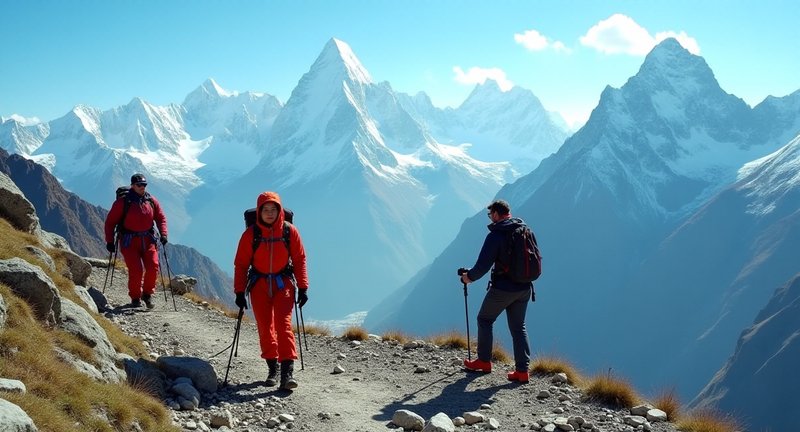
Every time I take on a climb, there’s this deep sense of humility. You’re not just hiking; you’re negotiating with the mountains, and they always have the final say. But in those rare moments when everything aligns, and you’re standing on top, it feels like the entire world is holding its breath for you.
But I’ll be honest it’s not for everyone. There’s a kind of madness in it, a craving for that raw connection to the earth. And once you’ve tasted it, it’s hard to shake off the pull to come back for more.
Introduction to High-Altitude Adventures
High-altitude adventures take you into a world where the air gets thinner, and the landscapes become otherworldly. From personal experience, there’s nothing quite like setting foot on a path that leads into the clouds literally. I’ve been there, and the thrill of the ascent, the slow dance with the mountain, is a feeling unlike any other. But let me break it down for you.
What makes high-altitude adventures so captivating? Here are a few key elements:
-
Unique challenges: From managing altitude sickness to navigating rocky, snow-covered terrains, these adventures test not only your physical limits but also your mental resilience.
-
Unpredictable weather: At high altitudes, the weather can shift from bright sunshine to an icy blizzard in minutes. It’s a wild card you can never fully prepare for but must always respect.
-
Stunning vistas: There’s nothing more rewarding than standing at a high ridge, watching the earth unfold below in a vast, untouched expanse. It’s like nature’s ultimate reward for your perseverance.
Whether you’re scaling an icy peak or trekking through towering ranges, each journey is a test of endurance and spirit. The higher you climb, the more you feel the raw power of nature. It’s humbling, to say the least. And while the mountains don’t care whether you reach the summit, they offer something even more valuable the experience of facing your own limits.
For anyone thinking about taking the plunge into high-altitude adventures, remember: it’s not just about the destination. It’s the journey that shapes you.
Overview of Pakistan’s Mountain Ranges
Let me tell you, Pakistan’s mountain ranges are unlike any other on Earth. When you set your eyes on these majestic peaks, it feels like stepping into a world where nature is both artist and architect. Pakistan is home to three of the world’s grandest mountain systems: the Himalayas, the Karakoram, and the Hindu Kush. Each has its own story, its own personality, and trust me, it’s something you have to experience firsthand to really understand.
Here’s a quick dive into what makes them so special:
-
Himalayas: You probably know the Himalayas already, but here they’re at their westernmost stretch. Towering glaciers, emerald lakes, and hidden valleys it’s a playground for adventure.
-
Karakoram: Now, this range is for the real dreamers. With some of the world’s highest peaks, like the formidable K2, it’s where the ground kisses the sky. It’s rugged, raw, and just awe-inspiring. The entire landscape here feels otherworldly.
-
Hindu Kush: The Hindu Kush range is perhaps less talked about but just as dramatic. It’s where history and nature meet, as these peaks have been a backdrop to ancient trade routes. The remote valleys here are filled with culture and mystery, waiting to be explored.
One of the things that always stays with me is the sheer diversity of these ranges. You can be walking through lush forests in one moment and navigating across barren, rocky terrain the next. And while the peaks themselves get all the attention, the true magic is found in the trails, the villages you pass through, and the people you meet along the way. It’s not just about summits it’s about the journey between them.
The Thrill of Climbing in the Karakoram
When you think of adventure, the Karakoram range is like that wild frontier you dream about as a child. Standing in front of those jagged peaks, it feels like the mountains are daring you to climb higher, dig deeper. I remember my first ascent, where every step felt like I was peeling back layers of myself strength I didn’t know I had, fears I had to face.
Here, you’re not just hiking. You’re navigating colossal glaciers, crossing fast-moving rivers, and scrambling up craggy ridges. But it’s not just the physical challenge that grabs you; it’s the overwhelming solitude. Up here, you feel like you’ve left the world behind. And yet, you’re completely present. There’s an electricity in the air like the mountains themselves are alive, watching.
What makes climbing in the Karakoram unlike anywhere else? Well, for one, it’s wild untamed and unpredictable. Some days, the wind roars through the valleys like it’s telling you to turn back, but the call of the summit is too strong.
Here’s what you can expect:
- Breath-snatching elevation: These peaks soar above 8,000 meters, and the thin air? It’s like you’re swimming through the sky.
- Technical ascents: Forget easy trails. You’ll be roped in, harness on, battling vertical ice and rock.
- Isolation: Unlike more famous climbing spots, you won’t see many fellow adventurers. Up here, it’s just you and the mountains.
There’s something raw about this place. It strips you down to your core, testing not just your physical limits but your mental resilience. It’s a thrill like no other, and once you’ve experienced it, it’s hard to ever go back to “normal.”
Exploring the Himalayan Peaks
is not just a journey, it’s an awakening. The air thins, but your spirit somehow swells, like the mountains are lending you their own ancient strength. Up there, I learned that it’s not about conquering nature it’s about becoming part of it.
The trails are etched into the earth like whispers of those who dared to tread before. Every step you take is layered with history and mystery. One moment you’re crossing icy rivers, the next, you’re enveloped in clouds, like the mountains themselves are pulling you closer to their secrets.
What struck me most was the silence. Not the eerie kind, but the silence that feels like a long-lost friend, offering you clarity. There’s a certain peace that wraps around you as you ascend, a calm that makes you feel both small and infinite at once.
And the people you meet along the way, they add another layer of magic. It’s as if the mountains have taught them how to move with grace like every smile, every gesture carries the rhythm of the peaks. Their hospitality is woven into the very fabric of these towering giants.
If you ever find yourself at the base of one of these colossal wonders, take a deep breath. The mountains have their own language, and if you’re quiet enough, you might just hear what they have to say.
The Spectacular Pamir Knot
The Pamir Knot is a place where earth seems to fold itself into a dramatic tangle of peaks. Here, borders blur, and cultures intermingle in ways that feel ancient and timeless. It’s one of those rare corners of the world that’s untouched by the rush of modernity.
I remember when I first laid eyes on it, the towering ranges rising as if to compete with the heavens themselves. This region isn’t just about breathtaking landscapes; it’s a mountaineer’s dream, especially for those who crave the rugged challenge of Mountaineering in Pakistan.
The harsh terrain demands respect, but also offers moments of serenity. As I trekked through the high passes, I could feel the pulse of the mountains beneath my feet. The stories here are carved into the rocks, echoing in the wind, waiting for those who dare to explore.
In the Pamir Knot, you’re not just climbing mountains; you’re connecting with something primal. It’s as much a spiritual journey as it is a physical one. And if you’re like me, you’ll feel drawn to return, time and time again, seeking that perfect summit.
If you’ve ever wondered what it’s like to be at the intersection of history, culture, and geography, this is the place. The Knot ties together not just mountain ranges, but experiences you won’t find anywhere else in the world.
Best Time for Climbing Expeditions
Climbing mountains isn’t just about reaching the summit; it’s about timing your adventure with the rhythms of nature. The best time to embark on an expedition is when the weather plays in your favor. Summer months, from June to August, are often ideal for high-altitude climbs, but even then, each range has its own personality.
For some peaks, early spring is when the snow is stable, and temperatures are mild, while for others, autumn’s clear skies provide the best visibility and the perfect backdrop for adventure. The key is knowing that each mountain you face has a sweet spot, and understanding that makes all the difference.
In my own experience, the shoulder seasons – right before and right after the busy summer months – offer a balance of favorable conditions without the crowds. It’s a chance to feel like you and the mountain are alone in the world. However, this requires patience and close attention to local forecasts.
Don’t be surprised if you find yourself battling the winds in early fall or dodging unexpected rain in late spring. Climbing expeditions are often a game of patience, and sometimes, waiting a few extra weeks can reward you with an unforgettable experience.
The mountains teach you that no two years are ever the same, and that’s part of the magic. Choosing the right time to climb is less about science and more about learning to read the subtle signs around you.
Essential Gear for Mountain Climbers
Mountain climbing is not just about scaling heights but also about being prepared for the unpredictable. You don’t want to be halfway up a peak, only to realize you’ve forgotten something crucial. I’ve been there, and trust me, you want to avoid it.
First off, sturdy boots are a must. No one talks about how much your feet will hate you if you skimp on footwear. I’ve found that investing in the right boots makes all the difference between enjoying the journey or enduring every step. Make sure they’re waterproof – those surprise snow patches are no joke.
Layering your clothes? That’s the golden rule. It’s like peeling an onion, but with a view. Start with a moisture-wicking base, add an insulating middle, and finish with a windproof outer layer. This keeps you prepared for everything from sweltering sun to biting winds, all in the same day.
Climbing harnesses and ropes are your lifelines. Literally. Don’t go cheap here. I’ve seen enough frayed ropes and worn-out harnesses to know that safety gear is the one place where you should go for the best you can get.
I always carry a headlamp, even when I think I’ll be back before dark. You never know when the trail might take longer than expected. And speaking of essentials, never forget a multi-tool. I’ve fixed more zippers, poles, and buckles with mine than I can count.
As a matter of fact, a well-packed backpack is the unsung hero of any expedition. It’s your lifeline. Pack light, but pack smart. Every ounce counts when you’re at high altitude, and every item should earn its place in your bag.
Preparing for High-Altitude Climbing
As I lace up my boots, the anticipation surges through me like an electric current. High-altitude climbing is not merely a hobby; it’s a pilgrimage to the heavens. Preparing for such an adventure involves meticulous planning and an unyielding spirit. Here are a few insights gathered from my journeys into the lofty realms:
-
Physical Conditioning: Your body is your most valuable asset. Before you set foot on those rocky trails, focus on building endurance, strength, and flexibility. Engage in activities like:
- Long-distance hiking
- Interval running
- Climbing gyms to simulate the real deal
-
Acclimatization: The mountains have their own rhythm, and you must dance to it. Spend time at elevation before the big push. This allows your body to adapt, minimizing the risk of altitude sickness. Take it slow and embrace the journey.
-
Gear Up Wisely: Your equipment is your lifeline. Invest in high-quality gear that suits the harsh mountain environment. Essential items include:
- Insulated clothing layers
- Sturdy trekking poles
- A reliable hydration system
-
Mental Fortitude: High-altitude climbing is as much a mental game as it is physical. Cultivate resilience through mindfulness practices or visualization techniques. Picture yourself summiting that peak, breathing in the crisp, thin air.
-
Weather Awareness: The mountain’s moods can shift swiftly. Stay updated on weather forecasts and be ready to adapt your plans. Remember, the mountain will always be there; your safety is paramount.
In preparing for high-altitude climbing, every detail counts. It’s not just about reaching the top; it’s about the journey, the connections made, and the lessons learned along the way. So, take a deep breath, embrace the challenge, and let the adventure unfold.
Mountaineering in Pakistan: A Full Examination
When I think about climbing the rugged peaks that dominate the landscape of this breathtaking region, I’m transported back to my own adventures in the heart of the mountains. The allure of these towering giants beckons every wanderer to embrace the thrill of ascent. Here’s what I’ve discovered along the way:
-
Majestic Landscapes: The scenery here is nothing short of surreal. Imagine standing at the base of a colossal peak, surrounded by emerald valleys and glacial lakes that shimmer under the sun. It’s a paradise for both the soul and the camera.
-
Diverse Trails: Whether you’re a seasoned climber or a novice adventurer, the options are plentiful. From gentle slopes to sheer cliffs, each path offers a unique challenge. I remember my first trek; the exhilaration was palpable as I conquered each new height.
-
Cultural Richness: It’s not just the peaks that captivate; it’s the people. Each village I passed was a context of stories, traditions, and warm smiles. Engaging with locals added a profound layer to my journey, enriching my experience beyond the physical challenge.
-
Weather Wonders: The climate can be as unpredictable as the terrain. One moment, the sun bathes you in warmth, and the next, clouds roll in, cloaking the landscape in mystery. Always be prepared for the whims of nature.
-
Adventure Awaits: Each climb is a personal odyssey, a test of endurance and spirit. As you navigate the rocky trails and navigate your own limits, you’ll find that the journey itself becomes as memorable as the destination.
So, if you’re pondering an escape into the wild embrace of the mountains, take the leap. Each ascent is not just about reaching the summit; it’s about discovering the resilience within.
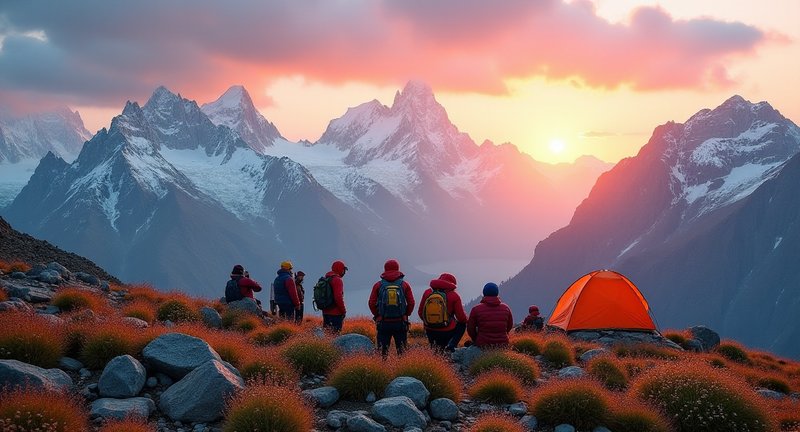
Navigating the Terrain: Maps and Guides
In the heart of rugged landscapes, maps and guides become your trusted companions. I’ve often found that navigating unfamiliar terrains can feel like deciphering an ancient code, each line and contour revealing secrets of the land.
While trekking through remote paths, I’ve learned to appreciate the art of reading a map. It’s not just about the destination; it’s about the journey, each turn on the paper whispering tales of adventure.
Guides are more than just navigational tools; they are storytellers. They breathe life into the cold, hard facts of elevation and distance, transforming data into a context of experience that fuels your wanderlust.
I vividly recall one particularly misty morning, where the fog clung to the mountains like a lover unwilling to part. The map in my hand felt more like a lifeline, guiding me through the obscured beauty, urging me forward into the unknown.
Using GPS can be a double-edged sword. It’s convenient, yet there’s something magical about unfolding a physical map, tracing routes with your finger, feeling connected to the terrain in a way that technology can’t replicate.
So, when you set out on your next expedition, consider the humble map. Embrace the thrill of discovery, the joy of getting lost, and the profound satisfaction that comes with finding your way back.
Safety Tips for Adventurers
When you embark on an adventure, especially in rugged terrains, safety should be your steadfast companion. Having traversed some of the most breathtaking landscapes, I’ve learned that preparation is key to unlocking a memorable experience without the looming shadow of danger. Here are some unconventional safety tips to ensure your journey is as smooth as the trails you traverse:
-
Know Your Terrain: Familiarize yourself with the environment before you arrive. Use maps, GPS, and local insights to understand the lay of the land. This knowledge will not only guide you but also help you anticipate potential hazards.
-
Pack Wisely: While it’s tempting to bring everything but the kitchen sink, focus on essentials:
- Multi-tool or Swiss Army knife
- First-aid kit
- Adequate clothing for changing weather
- Hydration system or water purification tablets
- Portable charger for communication devices
-
Travel with Companions: There’s wisdom in numbers. Having a buddy or a small group not only makes the journey more enjoyable but also enhances safety. You can look out for one another and share the load literally and figuratively!
-
Listen to Your Body: It’s easy to push through discomfort when the views are spectacular. However, fatigue can cloud judgment. Take regular breaks, hydrate, and if something doesn’t feel right, don’t hesitate to turn back.
-
Communicate Your Plans: Before you head into the wilderness, let someone know your itinerary. It’s a small step that can make a huge difference if things don’t go as planned.
Every adventure holds a thrill, but prioritizing safety transforms it into a journey filled with joy rather than worry. Embrace the wild, but always keep your wits about you.
Popular Peaks for Climbers
With respect to towering giants that beckon climbers with their majestic allure, few places rival the breathtaking heights found in this stunning region. Let me take you through some of the most iconic peaks that every climber dreams of conquering.
1. K2
This infamous beast stands as the second highest peak in the world, shrouded in mystery and challenge. It’s not just a climb; it’s an odyssey. The weather can be capricious, and the terrain demands respect. Those who dare to summit often find themselves changed forever.
2. Nanga Parbat
Known as the “Killer Mountain,” its sheer rock faces and snow-covered slopes offer both beauty and peril. Standing at the confluence of diverse cultures, reaching its summit is a rite of passage for many adventurers. Its landscapes are like nothing you’ve ever seen.
3. Gasherbrum II
This lesser-known giant, often overshadowed by its more famous neighbors, is a hidden gem for climbers looking for a quieter adventure. The views from its peak? Absolutely worth every effort it takes to reach.
4. Broad Peak
With its invitingly broad summit and challenging routes, this peak is a popular choice for climbers seeking a blend of excitement and accessibility. Each ascent feels like a conversation with nature, as you traverse its rugged trails.
5. Masherbrum
Often referred to as “K1,” this peak is a striking combination of elegance and difficulty. The routes are less crowded, allowing for an intimate experience with the raw power of the mountains.
Embarking on an adventure to these peaks is about more than just the climb; it’s about immersing oneself in the breathtaking beauty and rich cultures surrounding them. So, pack your gear, lace up your boots, and let the mountains call you!
K2: The King of the Mountains
Ah, K2! Just the name conjures images of sheer granite faces, whispering winds, and the allure of the unknown. Having stood at the base of this majestic giant, I can tell you that K2 isn’t just a mountain; it’s a rite of passage for adventurers. It beckons, with its jagged peaks piercing the sky like the sword of a sleeping giant.
Here are a few reasons why K2 reigns supreme:
- Majesty and Mystery: With a height of 8,611 meters, it holds the title of the second-highest peak on Earth. But it’s not just its altitude that captivates; it’s the aura of danger and beauty that surrounds it.
- A Challenge Unlike Any Other: The ascent to K2 is often considered one of the most difficult climbs in the world. It tests not only your physical strength but also your mental fortitude. Every step feels like a conversation between you and the mountain, where you learn humility and respect.
- The Untamed Wilderness: The surrounding landscape is a breathtaking context of glaciers, deep valleys, and vibrant flora that thrive in the harsh conditions. Each trek to K2 feels like an expedition through a canvas painted by nature itself.
So, why not embark on this adventure? While it may seem daunting, standing in the shadow of K2 brings an indescribable rush. You’ll feel small, yet profoundly connected to the world around you. Grab your gear, and let the call of K2 resonate in your soul.
Essential Information
Has a Pakistani climbed Mount Everest?
Yes, a Pakistani has successfully climbed Mount Everest. The first was Nasir Sadpara, who reached the summit on May 23, 2013. His achievement marked a significant milestone in Pakistan’s mountaineering history, inspiring many aspiring climbers in the country. Since then, several other Pakistani climbers have also attempted to conquer Everest, showcasing the talent and determination present in Pakistan’s mountaineering community.
Does Pakistan have a mountain range?
Yes, Pakistan is home to several prominent mountain ranges, including the Himalayas, the Karakoram, and the Hindu Kush. The Karakoram Range, in particular, boasts some of the world’s highest peaks, including K2, the second-highest mountain on Earth. These ranges not only contribute to the breathtaking landscapes of Pakistan but also attract climbers and adventurers from around the globe, making the country a hub for mountaineering.
Is there any high mountain in Pakistan?
Absolutely, Pakistan has numerous high mountains, with K2 standing as the most notable. At 8,611 meters (28,251 feet), it is the second-highest mountain in the world. Additionally, several other peaks exceed 8,000 meters, including Gasherbrum I and Broad Peak. These towering giants offer both challenges and opportunities for climbers, drawing enthusiasts eager to test their skills against some of the planet’s most formidable terrains.
Which mountain in Pakistan is called Killer Mountain?
Nanga Parbat is known as the ‘Killer Mountain’ due to its notorious reputation for being one of the most difficult and deadly peaks to climb. Standing at 8,126 meters (26,660 feet), it has claimed many lives over the years, particularly during the early attempts at summiting. The treacherous conditions and unpredictable weather contribute to its fearsome status, making it a formidable challenge for even the most experienced mountaineers.
Who was the Pakistani girl who climbed Mount Everest?
Samina Baig is the Pakistani girl who made headlines by climbing Mount Everest. She achieved this remarkable feat on May 19, 2013, becoming the first Pakistani woman to reach the summit. Her accomplishment not only broke gender barriers in a male-dominated sport but also inspired countless young women in Pakistan and beyond to pursue their dreams in mountaineering and adventure sports.
Has any Pakistani climbed K2?
Yes, several Pakistani climbers have successfully reached the summit of K2. Among them, the most notable is Muhammad Ali Sadpara, who is recognized for his significant contributions to climbing in the Karakoram Range. His successful ascent of K2, along with other challenging peaks, has established him as a prominent figure in Pakistan’s mountaineering history, showcasing the skills and resilience of local climbers.
What percent of Pakistan is mountainous?
Approximately 60% of Pakistan’s total land area is mountainous, primarily due to the presence of the Himalayas, the Karakoram, and the Hindu Kush ranges. This extensive mountainous terrain not only contributes to the country’s stunning natural beauty but also influences its climate, biodiversity, and cultural diversity. The mountains play a crucial role in the livelihoods of many communities, providing resources and opportunities for tourism and adventure sports.
Why are the Himalayas so important in Pakistan?
The Himalayas hold immense importance in Pakistan for several reasons. They are home to some of the world’s highest peaks, which attract climbers and trekkers from around the globe, boosting tourism. Additionally, these mountains play a vital role in the country’s climate, acting as a barrier that influences weather patterns. They also serve as crucial water sources for rivers, impacting agriculture and livelihoods in the region.
Where do 3 mountain ranges meet in Pakistan?
The three major mountain ranges the Himalayas, the Karakoram, and the Hindu Kush meet in the Gilgit-Baltistan region of Pakistan. This convergence point is known for its stunning landscapes and diverse ecosystems, making it a popular destination for trekkers and climbers. The area showcases breathtaking views and offers access to some of the highest peaks in the world, drawing adventurers and nature lovers alike.
Which nationality has climbed Everest the most?
Nepalese climbers hold the record for the most ascents of Mount Everest. Sherpas, in particular, have played a significant role in these successful climbs, often serving as guides and support for international climbers. Their intimate knowledge of the mountain and expert climbing skills have made them essential to numerous expeditions, showcasing the profound connection between the Sherpa community and Everest itself.
Who was the first climber from Pakistan to summit Mount Everest?
The first climber from Pakistan to summit Mount Everest was Nazir Sabir, who achieved this remarkable feat on August 7, 2000. His successful ascent not only marked a significant milestone for Pakistan but also paved the way for future generations of climbers. Sabir’s accomplishment has inspired many aspiring mountaineers in the country to pursue their dreams of conquering the world’s highest peaks.
Is Mount Everest located in Pakistan?
No, Mount Everest is not located in Pakistan; it is situated on the border between Nepal and the Tibet Autonomous Region of China. However, it is part of the Himalayan mountain range, which extends into northern Pakistan, where many other significant peaks are found. While Everest is a sought-after destination for climbers worldwide, Pakistan offers its own array of challenging mountains, attracting adventurers from across the globe.



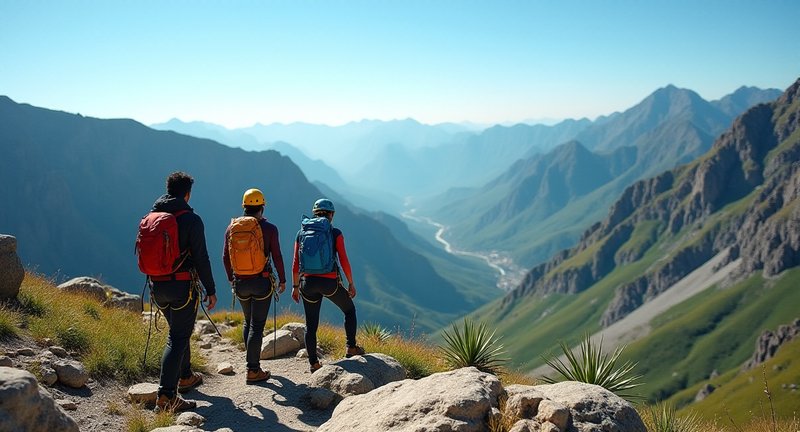
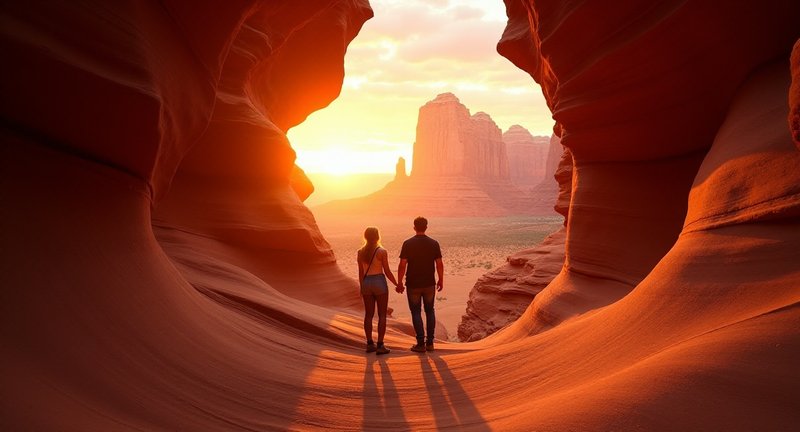
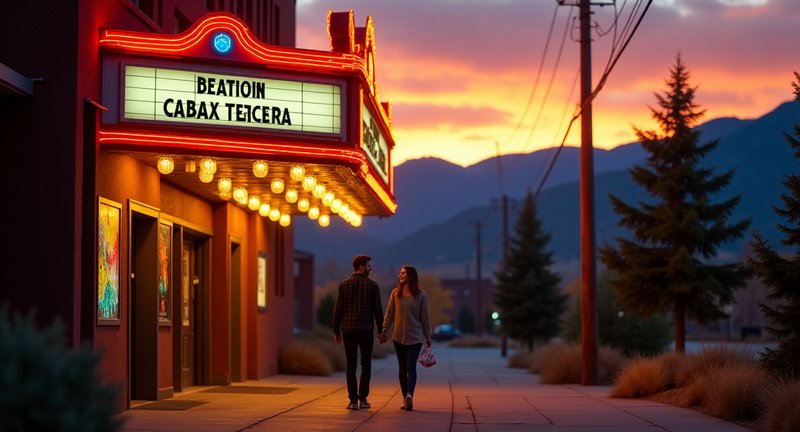
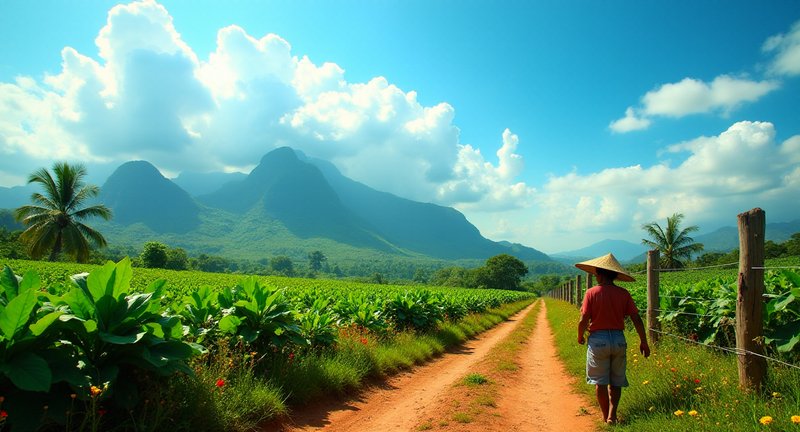




Your description of climbing those rugged peaks brings back some fond memories for me! The majestic landscapes are absolutely mesmerizing; I can almost feel the exhilaration of standing at the base of those colossal formations. I recall one particular hike where I felt completely dwarfed by the grandeur around me, but that just added to the adventure! It’s fascinating how diverse the trails can be. As a beginner, I started with the easier paths, but as my confidence grew, I tackled steeper slopes that really tested my limits. That thrill you mentioned is addicting! And yes, the cultural richness you observed is something I cherish from my trips too. I once shared a meal with a local family in a small mountain village, and it truly enriched my experience; their stories of the land were captivating. The weather can be unpredictable, which adds an element of surprise, but that’s what makes it all the more exciting! Each climb indeed feels like a personal odyssey, not just
Wow, your enthusiasm for high-altitude climbing really resonates with me! I completely agree that physical conditioning is crucial; I remember my first big climb and how much I underestimated the need for endurance training. Interval running has become my go-to, and it’s amazing how much it helps in building stamina for those steep ascents. Also, your point about acclimatization is spot on! Spending a few days at elevation transformed my climbing experience, allowing me to enjoy the breathtaking views instead of feeling like a fish out of water. I can’t stress enough how vital it is to embrace the journey; the lessons learned and connections made with fellow climbers often make the toughest climbs unforgettable. And the mental fortitude you mentioned? So true! Visualization techniques have helped me push through those tough moments when the summit feels far out of reach. Thanks for sharing these insights; you’ve inspired me to plan my next adventure with renewed e
You’re spot on about preparation! I’ve learned the hard way how crucial it is to pack smartly. My first climb, I forgot my waterproof boots, and let’s just say my feet were not happy by the end of the day! Layering is a game changer too; I always dress in layers now, especially for those unpredictable mountain days. One moment it’s sunny, and the next, you’re facing a snow flurry! And I couldn’t agree more about the importance of quality gear my climbing harness has saved my skin more than once. A multi-tool is a must-have; it’s amazing how many little fixes you can manage with one. It’s those little details that can turn a tough trek into an epic adventure. Happy climbing!
Absolutely! Timing your climbs with nature’s rhythm makes such a difference. I’ve found that the shoulder seasons are a secret weapon for avoiding crowds and experiencing the mountains in their raw beauty. Just last autumn, I had the trail to myself on a stunning clear day, and it felt like the mountain was just for me!
I couldn’t agree more about the Pamir Knot! It truly feels like a hidden gem in the vastness of our planet. I remember my first trek there standing at the edge of a high pass, I was struck by how the landscape seemed to whisper ancient stories. There’s something magical about being surrounded by peaks that have witnessed centuries of history. The diverse cultures in the region add an extra layer to the experience, making it more than just a climbing adventure. I recall sharing tea with locals who told tales of their ancestors scaling these very mountains, and it gave me a deeper appreciation for the land I was treading on. For anyone considering a trip, just know that the physical challenges are outweighed by the spiritual connection you forge with the mountains. It’s a reminder that we are part of something so much bigger than ourselves. I can’t wait to plan my next adventure back to this beautiful, untamed region. It’s definitely a place where you feel alive!
I absolutely love how you captured the essence of climbing in such a poetic way! Your words about becoming one with nature really struck a chord with me. The peace that envelops you as you ascend is unlike anything else it’s almost like the mountains share their wisdom through their stillness. And how true it is that the people you meet on these journeys add depth to the experience! I remember sharing stories with a local guide who had lived in the valleys all his life; he had so much wisdom to share about the land and its history. These moments remind us that we’re part of something bigger, and the mountains indeed have their own language.
Your description of the Karakoram range really resonates with me! I felt that same exhilaration when I summited my first peak there. The isolation can be intimidating but liberating at the same time. Each ascent feels like a personal triumph, and every gust of wind seems to whisper encouragement. I love the thrill of navigating those technical routes there’s something about the challenge that pulls me back every time. It’s like the mountains are inviting you to discover not just their heights but also your own limits.
I couldn’t agree more! The diversity in Pakistan’s mountain ranges truly is a sight to behold. I’ve trekked in the Himalayas and the Karakoram, and each offers a unique adventure. I remember standing at the edge of a glacial lake in the Himalayas, mesmerized by the reflections of the peaks. The hidden valleys feel like they’re waiting for explorers to uncover their secrets. And you’re right, it’s the journey through the trails and the warm interactions with locals that really make these experiences unforgettable. It’s about embracing the entire adventure!
Your description of high-altitude adventures really resonated with me! The air does get thinner, but oh, the views are worth every labored breath! I’ve trekked through the Andes, and I can confirm that the weather can flip like a switch. One moment it’s serene; the next, you’re racing against the elements. What I find captivating is how each climb teaches us more than just physical endurance. It’s about mental resilience too! The beauty of standing on a high ridge, looking down at valleys carved by glaciers, is nature’s way of rewarding our perseverance. I remember feeling so small yet so empowered at the summit, knowing I had conquered both the mountain and my fears. And you’re right the journey itself shapes us. I think we should all strive to embrace these adventures, not just for the summits but for the growth they bring. Let’s keep climbing and sharing these amazing experiences!
I can totally relate to that feeling of standing on a precipice, unsure if the trail even exists anymore! The mountains in Pakistan have this eerie ability to make you feel both lost and grounded at the same time. It’s the thrill of the unknown that keeps us coming back for more, isn’t it? That unpredictability in weather adds to the excitement. I remember hiking in the Karakoram and feeling the sun turn to snowflakes in mere moments. It’s definitely not for everyone, but if you’re drawn to the call of the wild, it’s one of the best experiences out there!
Wow, what an incredible glimpse into the world of mountaineering in Pakistan! I couldn’t agree more about how each climb is like stepping into a living storybook. I’ve had the pleasure of trekking in some remote areas of the Karakoram, and the experience truly humbles you. There’s something magical about standing on a glacier and feeling like you’ve touched history. The local guides are absolutely priceless; their wisdom and connection to the land enrich the journey. Every ascent not only tests our physical limits but also opens our minds to the beauty of the culture around us. I remember sharing chai with some local climbers after a long day on the trails definitely a highlight! And you’re spot on about the diverse terrain. I love how one moment you’re navigating rocky paths, and the next, you’re marveling at vast, icy expanses. It’s a reminder that adventure isn’t just about conquering peaks; it’s about embracing every moment along the way. So yes, let’s pack our ba